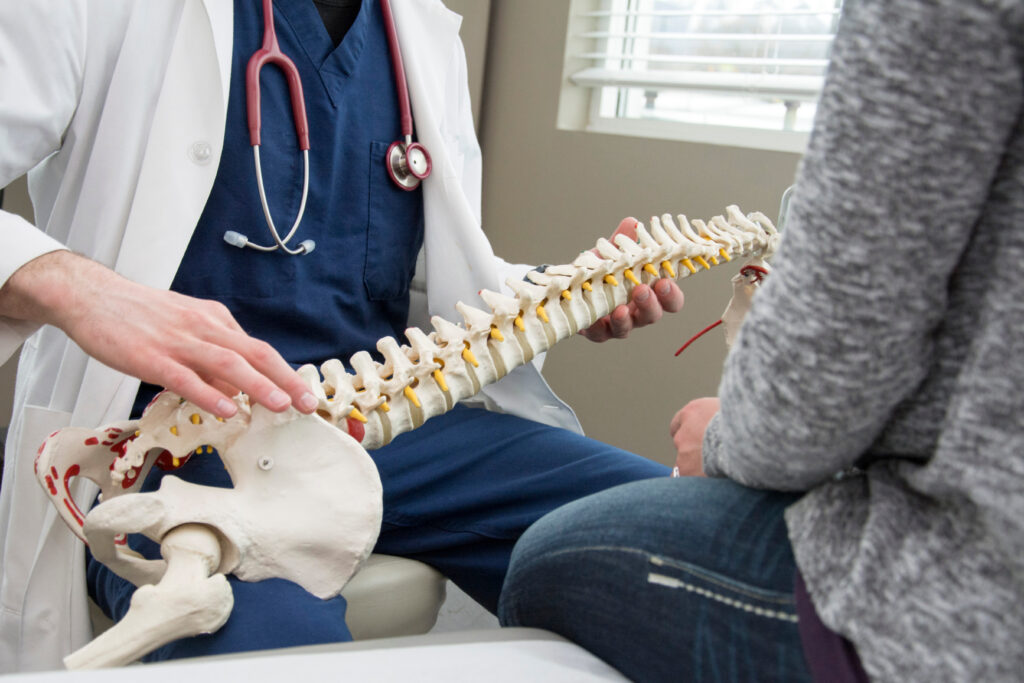Person Success Stories with the Best Spine Surgeons in St Louis MO
A Review of Spine Conditions That Frequently Outcome in Surgical Therapies
Spinal column conditions such as herniated discs, back constriction, and degenerative disc disease frequently necessitate surgical treatments when traditional treatments fall short to relieve relentless signs. Comprehending the nuances of each problem and the equivalent surgical alternatives, such as discectomy or spinal blend, is critical for efficient management.
Herniated Discs
Although several people with herniated discs may locate relief via traditional treatments, surgery comes to be a required factor to consider when signs persist or get worse - best spine surgeons in st louis mo. A herniated disc occurs when the soft internal gel of a spinal disc sticks out through its external layer, possibly pressing close-by nerves and leading to pain, feeling numb, or weak point in the extremities
Conservative monitoring generally includes physical therapy, discomfort medications, and corticosteroid injections, which intend to lower inflammation and enhance feature. In situations where these methods stop working to relieve debilitating signs, surgical alternatives may be explored.
The most typical operation for herniated discs is a discectomy, which involves the removal of the herniated part of the disc to eliminate pressure on the impacted nerve origin. In extra extreme instances, spinal combination may be required to stabilize the impacted vertebrae.
Clients are encouraged to review the possible risks and benefits of surgical treatment with their medical care service provider to make a notified decision. Eventually, the goal of any type of surgical intervention is to bring back function, reduce pain, and enhance overall high quality of life for individuals struggling with herniated discs.
Spinal Stenosis
Spinal constriction takes place when the rooms within the back slim, causing boosted stress on the spine cord and nerves. This condition can create in numerous areas of the spinal column, consisting of the cervical and back areas, frequently due to age-related changes, such as degenerative disc disease, joint inflammation, or enlarging of tendons.
Individuals with back constriction might provide with signs that include discomfort, numbness, prickling, or weakness, primarily in the legs or arms. These signs and symptoms can be aggravated by tasks that include standing or strolling, usually leading people to seek alleviation with conventional treatments like physical treatment, medications, or epidural steroid injections.
Nonetheless, when these non-surgical interventions fall short to give sufficient alleviation, surgical alternatives may be taken into consideration. Typical surgeries for spinal constriction include laminectomy, which includes the elimination of component of the vertebra to reduce stress, and back fusion, which supports the damaged location. The choice to pursue surgical treatment is normally based on the extent of symptoms, the degree of functional disability, and the total health and wellness of the person. Trigger medical diagnosis and management are vital to avoid additional neurological concession and improve lifestyle.
Spondylolisthesis
Spondylolisthesis takes place when one vertebra slips forward over one more, bring about misalignment of the spinal column. This problem can arise from numerous factors, including congenital problems, injury, or degenerative adjustments in the spine. It is most typically observed in the lumbar area, specifically at the L4-L5 and L5-S1 degrees.

Treatment alternatives differ based on the seriousness of the slippage and the symptoms provided. Conventional steps, including physical treatment, pain management, and task alteration, are typically the very first line of defense. When non-surgical techniques fail to relieve signs and symptoms or when considerable nerve compression is existing, medical intervention might be warranted. Surgical alternatives can include spinal blend or decompression procedures, focused on recovering alignment and relieving neurological symptoms. Early medical diagnosis and suitable monitoring are important for optimum results in patients with spondylolisthesis.
Degenerative Disc Illness

Clients with DDD usually experience pain that may radiate to the legs or arms, depending upon the impacted area of the back. The problem can be diagnosed with a combination of scientific analysis, imaging researches, and person background. Treatment options typically begin with conservative measures, including physical therapy, pain management, and lifestyle modifications. When these approaches stop working to supply ample alleviation, surgical interventions might be taken into consideration.
Surgical choices for DDD may consist of spinal blend or man-made disc replacement, intended at supporting the influenced section and alleviating discomfort (best spine surgeons in st louis mo). Ultimately, the option of therapy is individualized, taking right into account the seriousness of the problem, client wellness, and lifestyle variables
Spinal Growths

Spine tumors can occur from numerous factors, including genetic predisposition, environmental influences, and pre-existing medical problems. People might provide my site with a variety of signs and symptoms, consisting of localized discomfort, neurological shortages, weak point, or modifications in bowel and bladder feature, depending on the growth's size and location.
Surgical treatment may be called for to relieve signs and symptoms, acquire a biopsy, or get rid of the growth totally. The goal of surgical treatment is frequently to decompress neural components and stabilize the spinal column. Early discovery and intervention index are vital for optimizing outcomes in clients with back lumps.
Final Thought
In recap, spine problems such as herniated discs, back stenosis, spondylolisthesis, degenerative disc illness, and spine lumps often demand medical treatment due to their prospective to cause substantial pain and practical disability. While traditional therapies may use short-lived relief, surgical choices come to be vital when signs and symptoms intensify or continue. Prompt medical diagnosis and intervention play an essential function in bring back feature and boosting the quality of life for affected individuals, highlighting the value of thorough spinal care.
